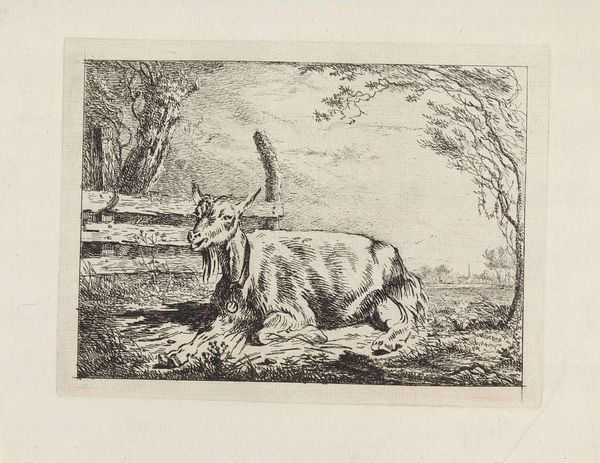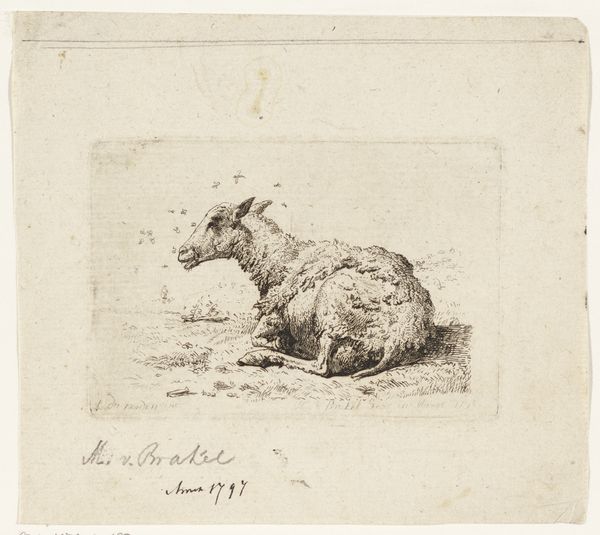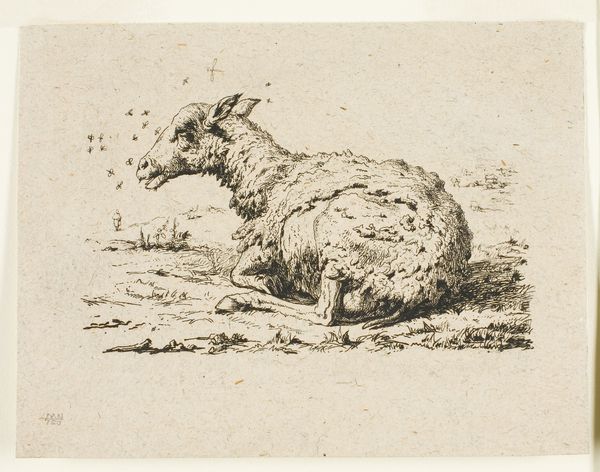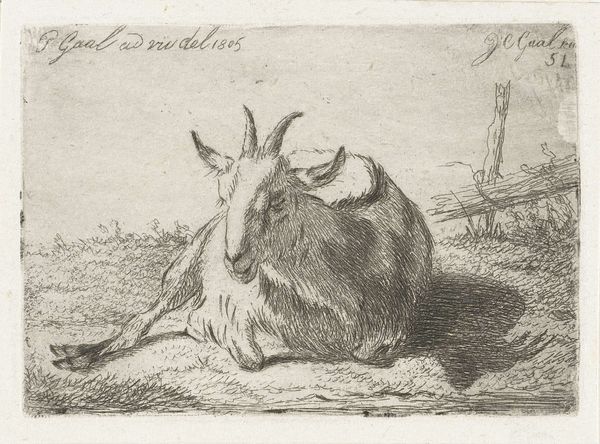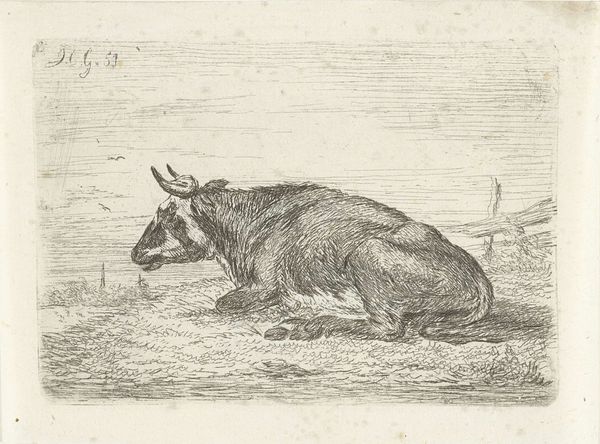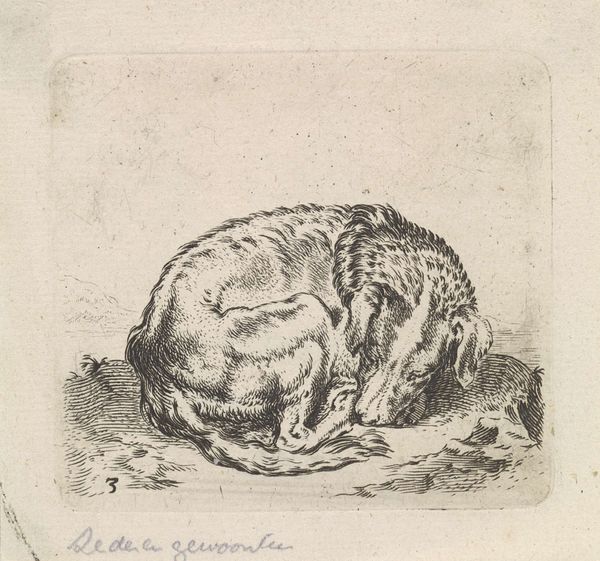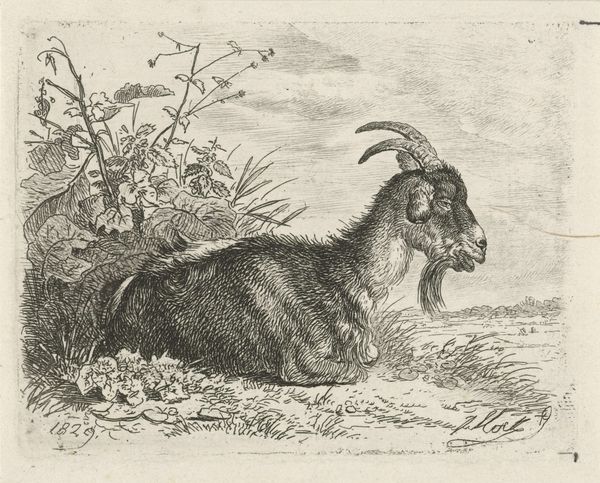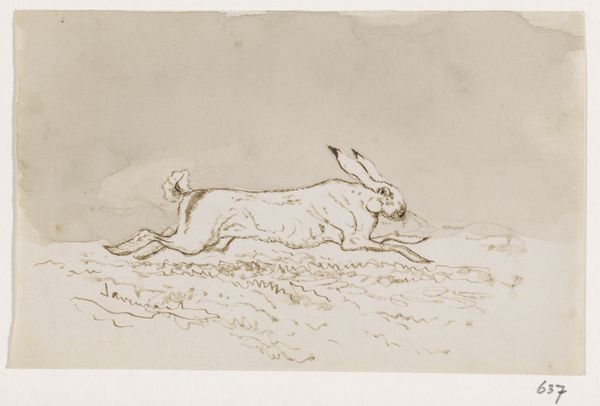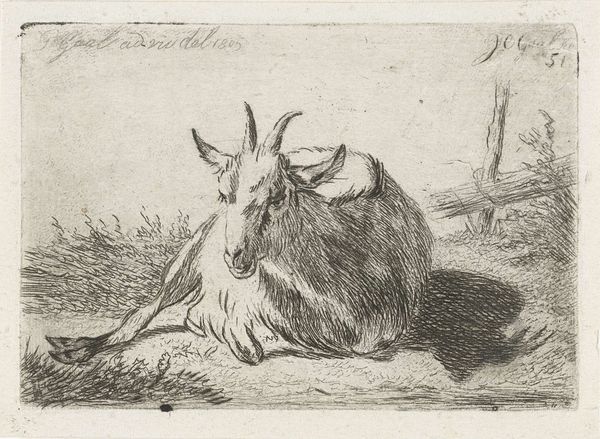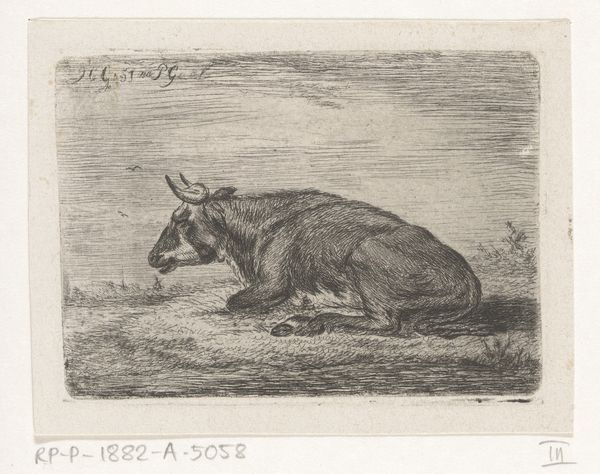
drawing, ink
#
drawing
#
baroque
#
animal
#
dutch-golden-age
#
landscape
#
figuration
#
ink
#
realism
Dimensions: height 77 mm, width 84 mm
Copyright: Rijks Museum: Open Domain
Curator: This is "Liggende geit," or "Reclining Goat," a drawing by Cornelis Saftleven, dating from the Dutch Golden Age, sometime between 1617 and 1681. Editor: What strikes me first is its simplicity. It’s a small ink drawing, almost like a quick sketch, but the detail in the goat’s fur is really quite charming. There’s a vulnerability, perhaps even a weariness, in its posture. Curator: Absolutely. Look at the linework. Saftleven uses a variety of strokes, short and dense for the darker areas suggesting volume, and longer, more delicate lines to capture the texture of the coat. It's masterful control of tone using only ink on paper. Editor: I wonder about Saftleven’s choice of subject. In a time of immense societal stratification in Dutch society, who had access to landscape and rural imagery, and what did it mean for them? Is this pastoral scene a deliberate act of class tourism by the artist for himself or for his patrons? Curator: It certainly reflects a broader artistic trend toward genre scenes and everyday life. However, I would argue the focal point is less an observation of society, and more about understanding the artist's perception and translation of organic form onto the 2-dimensional picture plane. Note the carefully constructed composition, the play of light and shadow – these are primarily formal concerns. Editor: I see that, and agree on that aspect. But let’s not forget that images of animals, and livestock in particular, also symbolized wealth and prosperity. While we are enjoying the careful rendering of light, Saftleven could have also been commenting on animal husbandry during a burgeoning agrarian market economy of the time. This idyllic rural imagery, can be contrasted with its realities. Curator: That's a compelling point. It really underscores how multifaceted this drawing can be. Editor: Indeed. On one hand, this is a tender representation, but when we reframe it, the image prompts reflections on class, privilege, and possibly environmental control and change. Curator: A precise consideration for the Golden age, and Saftleven’s context – revealing a beautiful technical study, and the rich, multi-layered experience contained in this small work on paper.
Comments
No comments
Be the first to comment and join the conversation on the ultimate creative platform.
